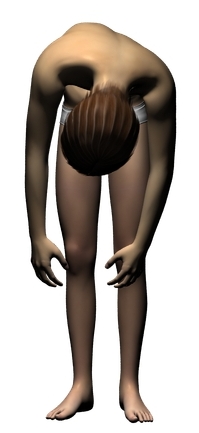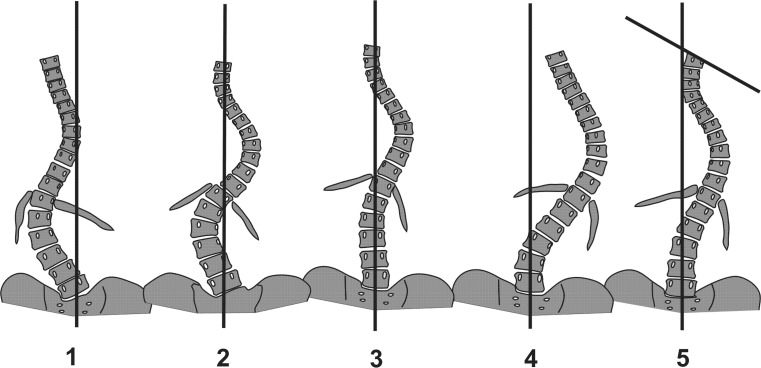Each type of scoliosis will have unique sets of exercises. You will learn which exercise is appropriate for your scoliosis.
Different Types
Throughout our website, we have frequently mentioned that there are different kinds of scoliosis. The King classification categorizes the different types of scoliosis. Schroth definition of different types of scoliosis is similar to the King's.
We don't consider one scoliosis type better or worse than the other.We address all types with the highest clarity and individual attention.
First Step

The first step addressing scoliosis is the correct identification of the scoliosis type. It is only then that the appropriate exercises can be selected.
Imagine if one would treat every back pain the same. It might be a simple solution to have a “cookie-cutter” solution, but the results will be poor. The same principles apply to treat scoliosis. Exercises that work well for C-curve scoliosis most likely will not work for S-curved scoliosis.
During your initial assessment, we will be able to determine the type of scoliosis.
Next
Once we have verified the type of scoliosis, we will focus on educating our patients in understanding their scoliosis, knowing the basic foundations of the Schroth Method, and begin with an easy step-by-step exercise program.
The more you know about your scoliosis, the easier it is to do the exercises. We want you to understand why you are doing that particular exercise and what is the benefit and goal of doing that. To understand the why you need to know your body well. Improving your body awareness will help you identify your habitual posture.
The basic foundation of Schroth Method will show why this method is different than other exercise programs. It will teach you the areas of importance during the exercises. You will learn the necessary Schroth terminology that will frequently be repeated throughout the program. These will ultimately make understanding and performing the exercises easier.
The multi-dimensional corrections can appear complex at first. But we have created an easy to understand step-by-step exercise program. Like completing a building block, we will teach you one correction at a time, from easiest to hardest. Once you have completed one exercise, then we will teach you the next one.
Our Teaching Style
We take the time to make your transition to learning Schroth Method as easy and seamless as possible. We know that every individual learns differently. Thus, we incorporate different teaching styles that will help you to complete the program successfully.
- Auditory: We explain to you how to perform the exercise, why we are doing it, and what is the objective of each exercise. Frequently, we use imaginary and real-life examples. For our younger patients, we use terminology and examples that will help to keep their interest and focus.
- Visual: We demonstrate each exercise first so you can see how it is done. Using pictures and graphs in advance will add to an easier understanding of the exercise.
- Kinesthetic or tactile: Now it’s your turn to do the exercises. We will give you verbal and tactile cueing to assist you with each exercise. You will have sufficient time to repeat the exercises.
What To Expect
At the end of your intensive program you should:
- know the type of your scoliosis
- know the difference between Schroth Method and other exercise programs
- understand the foundation of Schroth exercise program
- perform your specific exercises without supervision
- incorporate Schroth Methode in daily life activities
- identify physical activities that may increase your curvature
- notice possible reduction in the spinal rotation (through external measurement)
- notice possible reduction in pain

